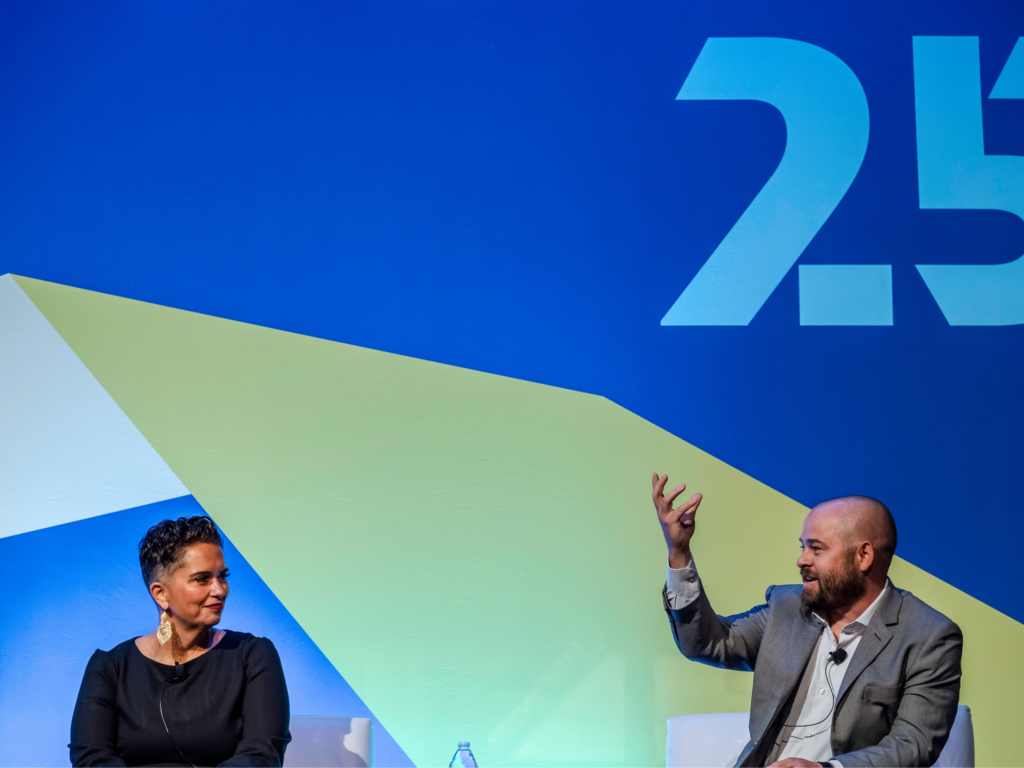 As Walter Isaacson shared with the audience during the morning session at the NewSchools Summit, the world needs more storytellers – it has plenty of preachers. In the afternoon, participants dug into effective storytelling, particularly in terms of what it takes to enlist ambassadors as evangelists for a shared message and to engage the media.
As Walter Isaacson shared with the audience during the morning session at the NewSchools Summit, the world needs more storytellers – it has plenty of preachers. In the afternoon, participants dug into effective storytelling, particularly in terms of what it takes to enlist ambassadors as evangelists for a shared message and to engage the media.
Steve Mancini runs the communications practice inside the Doris & Donald Fisher Fund, which supports messaging and media relations among the fund’s grantees, including KIPP and Teach For America – two of the most widely covered entrepreneurial ventures in the movement today. The secret? Beyond the organizations’ strong results for students, Mancini credits four principles:
- Show not sell. Authenticity matters. Mancini showed a clip from ABC News, which featured several Teach For America teachers in conjunction with the publication of a new book, Teaching as Leadership, by a TFA exec. However, he didn’t pitch the book, and in fact didn’t even show the producers the book until the very end of the process: he pitched the stories of incredible TFA teachers, along with the students and parents who are affected by their work.
- Fill the cup. Mancini says the best way to help the media tell your story is … to help the media. He tells reporters, “Until the story is filed, I work for you.” Tim Daly and Ari Rozman of The New Teacher Project (TNTP) echoed this insight. They talk to reporters about a range of stories (even those that have no direct mention of or benefit for TNTP), give reporters a heads up on breaking news that may not have hit their radar, and looks for ways to investigate the so-called “third rail” topics where TNTP can contribute data and insight to an ideological debate. In fact, TNTP’s influential Widget Effect study riginally sought to investigate why it was so hard to fire bad teachers, and ended up uncovering a much larger issue: the failure of teacher evaluation systems and policies to differentiate between teachers.
- Frame or be framed. Most organizations’ instinct when tough questions arise is to duck undercover, says Mancini, but he argues that’s the wrong approach. He recommends embracing those opportunities as moments when the window opens for an organization’s message to be heard – and it’s important to be ready for when that moment arises.
- Lemons into lemonade. Likewise, even bad or strange news can be turned to your advantage if you’re ready for it and attuned to the possibilities. KIPP Austin unintentionally garnered media attention when it chose to deal with bathroom graffiti by installing port-a-potties for students. But when the local news reporters showed up with their cameras, school leaders were ready to use this as an opportunity to get the community talking and to spotlight their work.
Ultimately, effective communications must be intentional and backed up with time, attention, and resources. Rozman called TNTP’s communications chief the organization’s “most indispensible member of the team” but also noted that they put energy and effort into a regularly updated “message library” so its entire organization can be an army of storytellers.


